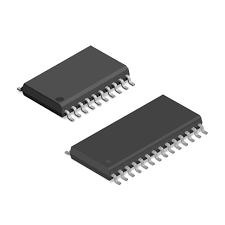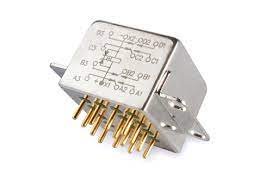Quad SPST Analogue Switch: A Comprehensive Guide
In electronic circuits, switches play a vital role in connecting and disconnecting different components. They allow for the control of the flow of electricity, and therefore the functionality of the entire circuit. However, there are different types of switches, including digital and analogue switches. In this article, we’ll discuss the difference between digital and analogue switches, the different types of analogue switches, and the characteristics of analogue switches.

What is the Difference Between Digital and Analogue Switch?
A digital switch is a type of switch that operates on binary signals, where the output state is either ON or OFF. They are often used in digital circuits, where the goal is to maintain a steady voltage level. On the other hand, an analogue switch is a type of switch that operates on a range of voltages or currents. They are used in analogue circuits, where the goal is to maintain the flow of electricity.
What are the Different Types of Analogue Switches?
There are different types of analogue switches, including single-pole single-throw (SPST), single-pole double-throw (SPDT), and multiplexer switches. The most common analogue switch is the SPST switch, which has one input and one output. When the switch is closed, the input is connected to the output, and when it is open, the input and output are disconnected.
The SPDT switch, on the other hand, has one input and two outputs. When the switch is closed, the input is connected to one output, and when it is open, the input is connected to the other output. This type of switch is commonly used in audio applications, where the signal can be directed to different speakers.
The multiplexer switch, also known as a mux, is a type of switch that connects one input to several outputs. It allows for the selection of different input channels, and it is commonly used in data acquisition and signal processing applications.

What are the Characteristics of Analogue Switches?
Analog switches have several characteristics that make them ideal for certain applications. One of the main characteristics is low on-resistance, which is the resistance of the switch when it is closed. This is important because it affects the voltage drop across the switch, which can impact the performance of the entire circuit.
Another characteristic of analogue switches is low leakage current, which is the small amount of current that flows through the switch when it is open. This is important because it can cause unwanted signals to enter the circuit, which can affect the performance of the entire system.
Analog switches also have a high bandwidth, which means that they can handle high-frequency signals without distortion. This is important in applications such as audio and video processing, where the signal needs to be maintained at a high quality.

What is Analogue vs Digital?
Analog and digital are two different types of signals that can be used in electronic circuits. Analog signals are continuous signals that vary in amplitude, frequency, or phase. They are commonly used in audio and video applications, where the signal needs to be maintained at a high quality.
Digital signals, on the other hand, are discrete signals that have only two states, ON or OFF. They are commonly used in digital circuits, where the goal is to maintain a steady voltage level. Digital signals are more robust to noise and interference, and they can be easily processed and manipulated by digital circuits.
In conclusion, the Quad SPST analogue switch is an essential component in electronic circuits that require the control of the flow of electricity. Analogue switches have several characteristics that make them ideal for certain applications, including low on-resistance, low leakage current, and high bandwidth. Understanding the difference between digital and analogue switches, as well as the different types of analogue switches, is crucial in selecting the right component for a particular application.



